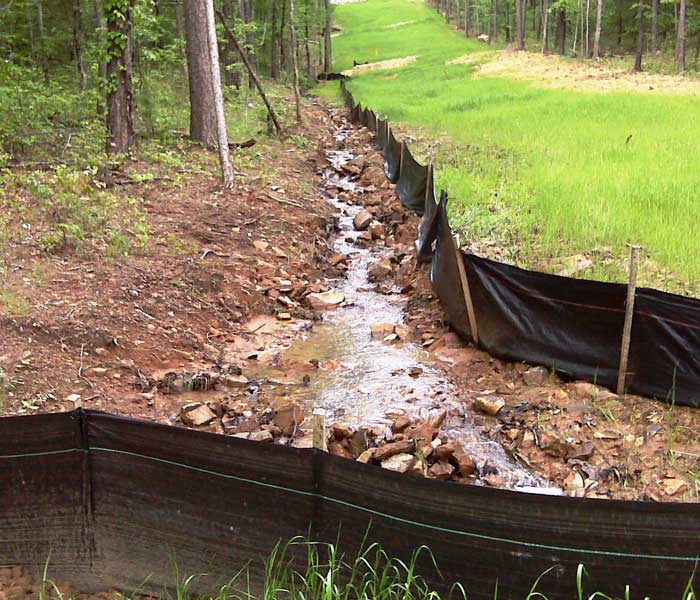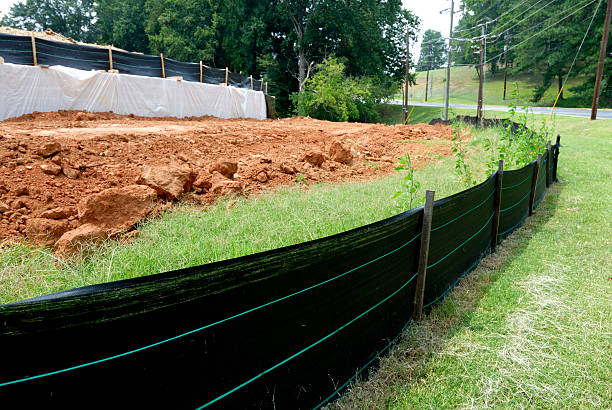Efficient Techniques by Memphis Erosion Control Solutions erosion control
Wiki Article
Reliable Disintegration Control Strategies for Sustainable Land Monitoring
Are you looking for ways to properly manage erosion on your land? Look no more! This article will certainly provide you with valuable information on the value of erosion control in lasting land monitoring. Discover the different kinds of disintegration and their effect on your land, as well as all-natural techniques to manage erosion. Learn how to execute reliable erosion control actions and guarantee appropriate monitoring and maintenance. Beginning taking action today to secure and maintain your important land.Relevance of Erosion Control in Lasting Land Administration
Erosion control is necessary for sustainable land management since it aids avoid soil deterioration and loss. By applying reliable disintegration control techniques, you can ensure the long-term health and productivity of your land. Without appropriate disintegration control measures, soil erosion can occur, resulting in the loss of valuable topsoil that is rich in nutrients essential for plant development.One of the primary reasons erosion control is vital is since it assists to maintain dirt fertility. When dirt wears down, it takes away the natural issue and nutrients that plants need to grow. This can lead to lowered crop returns and decreased performance of the land. Additionally, disintegration can lead to sedimentation in nearby water bodies, which can negatively impact aquatic ecological communities.
One more trick benefit of erosion control is the avoidance of land deterioration. By carrying out erosion control strategies such as terracing, shape plowing, and the usage of cover plants, you can aid protect against land degradation and preserve the health and wellness of your land.

Kinds Of Disintegration and Their Effect On Land
Recognizing the numerous kinds of disintegration and how they affect the land can assist you apply much better land management practices. Disintegration is the procedure by which dirt, rocks, and various other products are progressively deteriorated and delivered by all-natural forces such as ice, water, and wind. There are 4 primary types of disintegration: sheet erosion, rill erosion, gully disintegration, and mass movement disintegration.When a slim layer of soil is removed consistently from the surface of the land,Sheet disintegration happens. This kind of erosion is usually triggered by heavy rains or improper land management practices such as overgrazing or deforestation. Rill disintegration, on the various other hand, occurs when small networks or rivulets are formed on the land because of the circulation of water. This can occur on high slopes or locations with compacted soil.
Gully erosion is much more serious and takes place when larger networks or gullies are formed due to the continuous flow of water. Mass motion disintegration refers to the activity of large amounts of dirt and rocks downhill due to the force of gravity.
Comprehending these various types of disintegration and their influence on the land is critical for effective land administration. By applying erosion control techniques such as terracing, contour plowing, and reforestation, you can minimize disintegration and maintain the honesty of the land. In addition, exercising great land monitoring strategies like correct plant turning, maintaining ground cover, and utilizing sediment control steps can additionally help in preventing erosion.
All-natural Erosion Control Methods for Lasting Land Management
By applying natural erosion control techniques, you can successfully maintain the honesty and take care of of your land. In areas where erosion is a significant worry, setting up erosion control blankets or floor coverings can be beneficial. In general, by utilizing these all-natural disintegration control methods, you can properly handle and safeguard your land from erosion, ensuring its long-term sustainability.Carrying Out Reliable Disintegration Control Procedures

To efficiently handle and safeguard your land from erosion, you ought to think about implementing proven methods that can aid mitigate the risk. One such method is using disintegration control blankets. These coverings, made from all-natural fibers or artificial materials, are positioned on the soil surface area to stabilize it and avoid disintegration. They assist preserve moisture, decrease debris overflow, and advertise the growth of plant life. One more reliable technique is the use of terracing. Terracing entails developing level systems on sloping land, which assists to reduce drainage and stop disintegration. It also allows for the growing of crops on the terraced slopes. Furthermore, planting vegetation is a crucial action in disintegration control. Shrubs, trees, and turfs have considerable origin systems that bind the dirt together, decreasing erosion triggered by wind and water. Setting up sediment control actions such as silt fences and sediment fish ponds can aid trap sediment and avoid it from going into nearby water bodies. These actions are particularly vital throughout building and construction activities. By applying these shown erosion control approaches, you can properly secure your land and minimize the risk of disintegration and its damaging effects.
Tracking and Upkeep of Erosion Control Techniques
When surveillance and keeping erosion control procedures, it is very important to regularly inspect the disintegration control coverings, balconies, greenery, and sediment control measures to ensure they are functioning properly and effectively avoiding disintegration (Memphis Erosion Control Solutions Memphis TN). By conducting regular examinations, you can determine any type of issues or shortages in the disintegration control strategies and take essential activities to rectify them
Start by examining the disintegration control coverings. Look for indicators of damage or wear, such as splits my explanation or subjected dirt.
Examine for indications of erosion, such as sediment accumulation or uneven surface areas. Make sure that the terraces are correctly developed and maintained to draw away water flow and reduce erosion.
Assess the plants in the erosion control location. Make certain that it is healthy and balanced and appropriately covers the soil. Seek any signs of plant tension or disease, and resolve them immediately. Appropriate plants protection aids stabilize the soil and prevent disintegration.
Lastly, evaluate the debris control procedures, such as debris basins or sediment fencings. Make sure they are properly set up and operating as intended. Eliminate any type of gathered sediment and guarantee that the controls are effectively preserved.
Regular tracking and upkeep of disintegration control actions are vital for their long-lasting efficiency in preventing erosion and preserving lasting land monitoring techniques.
Conclusion
In verdict, you need to focus on erosion control for lasting land monitoring. By recognizing the various kinds of erosion and their influence on the land, you can apply reliable all-natural erosion control methods.Discover the various types of disintegration and their influence on your land, as well as all-natural techniques to regulate erosion. There are More Help 4 major types of disintegration: sheet disintegration, rill erosion, gully erosion, and mass activity erosion.
By executing erosion control techniques such as terracing, shape plowing, and reforestation, you can minimize disintegration and protect the honesty of the land (Memphis you can look here Erosion Control Solutions silt fences). On the whole, by utilizing these natural disintegration control methods, you can properly handle and safeguard your land from disintegration, guaranteeing its lasting sustainability
By recognizing the different types of disintegration and their effect on the land, you can carry out reliable all-natural disintegration control approaches.
Report this wiki page